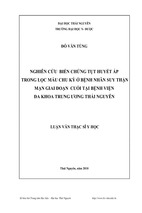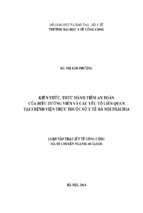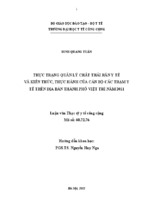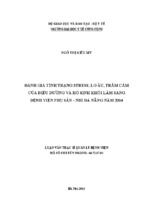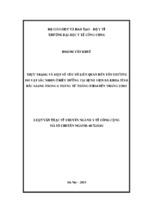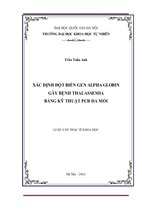Distributed Solar Energy Applications in Commercial Buildings across China: Value
Comparison and Policy Implication
A thesis submitted in fulfilment of the requirements for the degree of Master of Applied
Science
Hongying Zhao
Bachelor of Applied Science (Construction Management) (Honours) RMIT University
School of Property Construction and Project Management
College of Design and Social Context
RMIT University
August 2019
Declaration
I certify that except where due acknowledgement has been made, the work is that of the author
alone; the work has not been submitted previously, in whole or in part, to qualify for any other
academic award; the content of the thesis is the result of work which has been carried out since the
official commencement date of the approved research program; any editorial work, paid or unpaid,
carried out by a third party is acknowledged; and, ethics procedures and guidelines have been
followed.
Hongying Zhao
August 2019
I
Acknowledgements
First of all, I would like to sincerely thank my supervisor Dr Rebecca Yang for her guidance and
support during my master study. She is always the one who inspires me the most on my academic
path.
I would like to thank my co-supervisor Dr Trivess Moore for his dedication, encouragement, and the
warmest support when I doubted myself.
I would like to give my appreciation to all the team members in my research group. Your kind help
and feedback for my presentations were important to my study.
Thanks to all my friends and colleagues during my two-year journey at RMIT University.
Finally, I would like to thank my parents for providing financial and mental support to help me
pursue my dream.
II
Table of Contents
Declaration ............................................................................................................................................... I
Acknowledgements................................................................................................................................. II
List of Figures ......................................................................................................................................... VI
List of Tables ......................................................................................................................................... VII
Abstract ................................................................................................................................................... 1
Chapter 1 Introduction ........................................................................................................................... 3
1.1 Research background.................................................................................................................... 3
1.1.1 Energy consumption of buildings in urban areas of China .................................................... 4
1.1.2 PV applications in buildings in urban areas of China ............................................................. 5
1.1.3 Policy impacts on the PV’s economics in China ..................................................................... 8
1.2 Research questions ..................................................................................................................... 10
1.3 Research aim and objectives ...................................................................................................... 11
1.3.1 Specific objectives of this research ...................................................................................... 11
1.4 Research scope ........................................................................................................................... 11
1.5 Research significance .................................................................................................................. 11
1.6 Thesis outline .............................................................................................................................. 12
1.7 Summary ..................................................................................................................................... 13
Chapter 2 Literature review .................................................................................................................. 14
2.1 Introduction ................................................................................................................................ 14
2.2 PV cells, systems and applications in building ............................................................................ 14
2.2.1 PV cells ................................................................................................................................. 14
2.2.2 PV systems ........................................................................................................................... 15
2.2.3 PV applications in buildings ................................................................................................. 16
2.2.4 PV building applications in China ......................................................................................... 18
2.3 Government policies regarding solar PV power generation....................................................... 21
2.3.1 Incentives in the global context ........................................................................................... 21
2.3.2 Incentives in China ............................................................................................................... 23
2.3.3 Electricity price policy in China ............................................................................................ 32
2.4 Geographic conditions in China .................................................................................................. 34
2.4.1 Geographic conditions in China and typical cities ............................................................... 34
2.4.2 Tariff policy and subsidy ...................................................................................................... 39
2.5 Summary ..................................................................................................................................... 42
Chapter 3 Research methods and process ........................................................................................... 43
3.1 Introduction ................................................................................................................................ 43
III
3.2 Research process ........................................................................................................................ 43
3.3 Research methods ...................................................................................................................... 45
3.3.1 Literature review.................................................................................................................. 45
3.3.2 Case study ............................................................................................................................ 45
3.3.3 Economic analysis method................................................................................................... 48
3.3.4 MATLAB programming ......................................................................................................... 50
3.4 Ethics considerations .................................................................................................................. 52
3.5 Summary ..................................................................................................................................... 52
Chapter 4 The impact of geographic location on financial suitability of different PV systems across
China ..................................................................................................................................................... 53
4.1 Introduction ................................................................................................................................ 53
4.2 Analysis process .......................................................................................................................... 53
4.2.1 Benefit analysis .................................................................................................................... 54
4.2.2 Cost-benefit analysis ............................................................................................................ 58
4.3 Results and discussion ................................................................................................................ 58
4.3.1 Economic assessment results .............................................................................................. 60
4.3.2 Discussions ........................................................................................................................... 65
4.4 Summary ..................................................................................................................................... 69
Chapter 5 The impact of national subsidy on financial suitability of different PV systems across China
.............................................................................................................................................................. 71
5.1 Introduction ................................................................................................................................ 71
5.2 Analysis process .......................................................................................................................... 71
5.3 Results and discussion ................................................................................................................ 78
5.3.1 Analysis of five scenarios ..................................................................................................... 79
5.3.2 Analysis based on the geographic location .......................................................................... 88
5.3.3 The impact of urban environment ....................................................................................... 98
5.4 Summary ................................................................................................................................... 102
Chapter 6 The impact of electricity price change on financial suitability of different PV systems across
China ................................................................................................................................................... 103
6.1 Introduction .............................................................................................................................. 103
6.2 Analysis process ........................................................................................................................ 103
6.3 Results and discussion .............................................................................................................. 104
6.3.1 Economic performance of 5 scenarios across the 12 cities ............................................... 106
6.3.2 Analysis of 5 scenarios across the 12 cities........................................................................ 113
6.3.3 The impact of urban environment ..................................................................................... 123
6.4 Summary ................................................................................................................................... 127
Chapter 7 Conclusions ........................................................................................................................ 129
IV
7.1 Introduction .............................................................................................................................. 129
7.2 Review of research objectives .................................................................................................. 129
7.3 Research outcomes ................................................................................................................... 130
7.4 Limitations and recommendations for further research .......................................................... 132
7.4.1 Limitations of the research ................................................................................................ 132
7.4.2 Suggestions for future research ......................................................................................... 133
Publication .......................................................................................................................................... 134
References .......................................................................................................................................... 136
Appendix 1 .......................................................................................................................................... 142
Appendix 2 .......................................................................................................................................... 145
Appendix 3 .......................................................................................................................................... 154
Appendix 4 .......................................................................................................................................... 163
Appendix 5 .......................................................................................................................................... 169
V
List of Figures
Figure 2.1 The Categorization of BIPV (source: Biyik et al. (2017)) ...................................................... 17
Figure 2.2 The tariff levels of PV power generation in 3 regions from 2011 to 2018 .......................... 29
Figure 2.3 Average commercial electricity prices for each region in China ($/kWh) (source: Wang and
Zhang (2016)) ........................................................................................................................................ 34
Figure 2.4 Solar irradiation distribution map (source:NREL (2012)) ..................................................... 35
Figure 2.5 Building climate zones in China (Source: GB50352-2005) ................................................... 37
Figure 2.6 GDP per capita and carbon emission per capita of 31 cities in 2014 (source: Guo et al.
(2017)) ................................................................................................................................................... 38
Figure 3.1 The research process ........................................................................................................... 44
Figure 3.2 Pictures of all cases .............................................................................................................. 47
Figure 4.1 Investigation process in this chapter ................................................................................... 54
Figure 4.2 The energy output of the first year...................................................................................... 55
Figure 4.3 NPV per kW of 5 scenarios ................................................................................................... 61
Figure 4.4 Payback period of 5 scenarios ............................................................................................. 62
Figure 4.5 IRR of 5 scenarios ................................................................................................................. 64
Figure 5.1 Combination analysis of NPV per kW performance and sensitivity across 5 scenarios ...... 86
Figure 5.2 Combination analysis of PB performance and sensitivity across 5 scenarios...................... 87
Figure 5.3 Combination analysis of IRR performance and sensitivity across 5 scenarios .................... 88
Figure 5.4 Matrix of NPV per kW performance and sensitivity in the 12 cities .................................... 96
Figure 5.5 Matrix of PB performance and sensitivity in the 12 cities ................................................... 96
Figure 5.6 Matrix of IRR performance and sensitivity in the 12 cities .................................................. 97
Figure 5.7 Matrix of overall performance and sensitivity in the 12 cities ............................................ 98
Figure 5.8 NPV per kW, PB and IRR of 5 scenarios in Shanghai when considering national subsidy and
shading loss ......................................................................................................................................... 101
Figure 5.9 NPV per kW, PB and IRR of 5 scenarios in Urumqi when considering national subsidy and
shading loss ......................................................................................................................................... 102
Figure 6.1 Three fitting equations for NPV per kW results of Scenario 4 in Taiyuan ......................... 115
Figure 6.2 Matrix of NPV per kW performance and sensitivity in the 12 cities .................................. 120
Figure 6.3 Matrix of PB performance and sensitivity in the 12 cities ................................................. 121
Figure 6.4 Matrix of IRR performance and sensitivity in the 12 cities ................................................ 122
Figure 6.5 Matrix of overall performance and sensitivity in the 12 cities .......................................... 123
Figure 6.6 NPV per kW, PB and IRR of 5 scenarios in Shanghai when considering tariff growth rate
and shading loss .................................................................................................................................. 126
Figure 6.7 NPV per kW, PB and IRR of 5 scenarios in Urumqi when considering tariff growth rate and
shading loss ......................................................................................................................................... 127
VI
List of Tables
Table 2.1 Overview of government support mechanisms for solar PV generation (source: Jacobs and
Sovacool (2012)) ................................................................................................................................... 21
Table 2.2 Relevant policies regarding investment subsidy policies (source: Zhang et al. (2015a) &
Author) .................................................................................................................................................. 24
Table 2.3 Solar PV building Projects in China from 2009 to 2012 (source: Zhang and He (2013)). ...... 25
Table 2.2.4 Golden Sun demonstration program (source: Zhang and He (2013))................................ 25
Table 2.5 Relevant policies regarding the FIT policies (source: Zhang et al. (2015a) & Author) .......... 26
Table 2.6 Classification of 3 regions regarding the FIT policies ............................................................ 28
Table 2.7 The value of two different modes of distributed PV generation .......................................... 29
Table 2.8 Relevant policies regarding the Free Grid-connection policies (source: Zhang et al. (2015a)
& Author) .............................................................................................................................................. 31
Table 2.9 Relevant policies regarding taxation policies (source: Zhang et al. (2015a) & Zhao et al.
(2015b) & Author) ................................................................................................................................. 32
Table 2.10 Solar irradiation distribution zones and typical cities ......................................................... 36
Table 2.11 Building climate zones and typical cities. ............................................................................ 37
Table 2.12 Energy consumption of typical commercial office building in different climate zones
(source: GB/T 51161-2016) ................................................................................................................... 38
Table 2.13 Matrix of climate zone and solar resource level and the selected cities ............................ 39
Table 2.14 Summary of city information .............................................................................................. 41
Table 3.1 Summary of the background to the three projects. ............................................................. 46
Table 4.1 Comparison of energy consumption and energy generation ............................................... 57
Table 4.2 The results of NPV per kW, PB and IRR of 5 scenarios in the 12 cities ................................. 58
Table 4.3 Investment assessment of five scenarios among all the cities ............................................. 67
Table 5.1 Summary of the economic performance of 5 scenarios in the 12 cities under different
subsidy conditions according to the standard (i.e. black tick means above the standard while red
cross means below the standard). ........................................................................................................ 73
Table 5.2 Summary of the economic performance of 5 scenarios from the perspective of NPV per
kW, PB, IRR and overall performance under the national subsidy change .......................................... 82
Table 5.3 Summary of the slopes of 5 scenarios in 12 cities and their ranks ....................................... 84
Table 5.4 Summary of the economic performance of the 12 cities from the perspective of NPV per
kW, PB, IRR and overall performance under the different national subsidies ..................................... 89
Table 5.5 Summary of the slopes of 5 scenarios in the 12 cities and their ranks among the 12 cities 90
Table 5.6 Summary of the NPV per kW, PB, IRR and overall sensitivity of the 12 cities when the
national subsidy changes ...................................................................................................................... 93
Table 5.7 Summary of 25 years of energy generation in the 12 cities and their ranks (unit: kWh) ..... 94
Table 5.8 Summary of electricity price and growth rate in the 12 cities and their ranks .................... 94
VII
Table 6.1 Summary of the economic performance of 5 scenarios in the 12 cities under 4 electricity
growth rates according to the standard ............................................................................................. 105
Table 6.2 Average of NPV per kW of the 12 cities for each scenario under different electricity price
growth rates ........................................................................................................................................ 107
Table 6.3 Summary of the economic performance of 5 scenarios from the perspective of NPV per
kW, PB, IRR and overall performance under the change of electricity price growth rate ................. 109
Table 6.4 Summary of the average NPV per kW under 4 electricity growth rates in the 12 cities and
their ranks ........................................................................................................................................... 110
Table 6.5 Summary of the economic performance of the 12 cities from the perspective of NPV per
kW, PB, IRR and overall performance under different electricity price growth rates ........................ 112
Table 6.6 Summary of the analysis of 5 scenarios in the 12 cities and their ranks among the 12 cities
............................................................................................................................................................ 116
Table 6.7 Summary of the NPV per kW, PB, IRR and overall sensitivity of the 12 cities when the
electricity growth rate varies .............................................................................................................. 119
VIII
Abstract
China is experiencing rapid economic growth and urbanization. In China’s continuously growing
urban areas, solar photovoltaic (PV) application in buildings is one of the most suitable renewable
energy resources. Building PV systems can be categorized into two types: building attached PV
(BAPV) and building integrated PV (BIPV). However, in China, there is a lack of research comparing
the two systems, especially from the economic perspective. Meanwhile, policy changes play an
important role in the economic benefit of building PV projects in China. Among them, changes in
national subsidy and electricity price are of great importance for distributed building PVs with high
self-consumption ratio. A better understanding of the impacts of these policy-related factors on the
economic performance of building PVs is required. Additionally, China is a large country with diverse
geographic conditions and policy conditions. The complexities of the regional situation make it
difficult for investors and policy-makers to have a clear understanding of actual value of building PV
systems, which hinders the uptake of both BAPV and BIPV in China.
This research aims to address these research gaps. Through the literature review, the most popular
building PV applications in China are identified. Hence, five building PV scenarios are developed
based on real-word cases, including BAPV, roof BIPV and window BIPV. Given the diverse geographic
conditions and policy conditions in China, 12 typical cities are selected for the research. A MATLAB
program is established to calculate energy generation and evaluate the economic performance of
the building PV applications in the 12 cities. By changing the input of the national subsidy and tariff
growth rate in the program, the impacts of the two policy-related parameters on the economic
results are investigated. The impact of shading loss in the urban environment is also incorporated.
The results show that, under current geographic conditions and local policy, roof BIPV replacing
glazing roof is the most attractive investment option for investors among all building PV types. In
terms of cities, Shanghai is the first option for both BAPV and BIPV investment, while cities including
1
Guangzhou, Chengdu, Guiyang and Chongqing are less financially attractive to investors. The findings
can improve the investment confidence of building PVs in China, especially for BIPVs.
For the national subsidy, the results can be categorized based on economic performance and
sensitivity to the subsidy. For different stakeholders, different implications are generated based on
economic performance and sensitivity. Generally, Shanghai, Taiyuan and Tianjin are believed to be
the best investment destinations of building PVs among the 12 cities at the risk of shrinking subsidy.
Policy-makers can reduce national subsidy in the cities categorized as having good economic
performance, while seeking other incentives to stimulate the economic performance for PV
scenarios and cities with bad economic performance and low sensitivity.
Regarding the impact of tariff growth rate, the results show that the outlook on the future electricity
price can significantly affect the economic performance of building PV applications in the cities with
high sensitivity to electricity price change. Thus, building PV applications can be promoted in the
cities with high potential of the electricity price growth. On the other hand, there are cities that
make building PV application a safe and profitable investment, such as Shanghai and Taiyuan.
Moreover, the shading loss analysis shows that roof BAPV with large capacity and roof BIPV
replacing glazing roof are still recommended for investment. In terms of city, Shanghai remains the
first option for all kinds of building PV investment. By contrast, more attention should be paid in
Chengdu, Chongqing and Urumqi to confronting the increasing city density.
The contributions of this research are to: (1) improve investors’ and policy-makers’ understanding of
the value of PV buildings across China; (2) provide policy implications to encourage the healthy
growth of the building PV applications in China; and (3) demonstrate feasibility of building PV
systems for other cities in similar climates and/or for cities in developing countries like China.
2
Chapter 1 Introduction
1.1 Research background
Human activities release significant amounts of greenhouse gases (GHG) that result in global climate
changes (IPCC, 2014). The IPCC Fourth Assessment Report (AR4) (IPCC, 2007) has identified the very
likely relationship between climate change and increasing GHG emissions. There is a global
agreement that countries must urgently reduce GHG emissions if drastic climate change is to be
mitigated (UNEP, 2016).
Globally, the building sector is responsible for 32% of total energy consumption (UNEP, 2016), and
has been recognized as possessing large potential for improvement in energy conservation and
further utilization of renewable energy (Lucon et al., 2014). A variety of renewable energy
technologies for buildings have been developed to reduce the GHG emissions caused by energy
consumption in the built environment, such as ground-source heat pumps, solar water heating and
solar photovoltaic (PV) systems (Zhang et al., 2015a).
Among these technologies, PV is one of the most viable renewable energy applications at present. A
PV system applied to a building allows the building to harness solar energy to make non-polluted
electricity for its own operation or even to make profits by selling the generated electricity to the
public grid. In recent years, PV technology has developed at a greater rate compared with other
renewable energy technologies (Biyik et al., 2017). This is mainly due to the significant cost reduction
of PV materials, increasing government supports over the last decade and abundant products supply
(Yuan et al., 2014, Zhang et al., 2015a, Zhao et al., 2015a, Nemet et al., 2017). From the perspective
of sustainability, the building PV applications should be promoted not only in developed countries
that consume lots of energy but also in developing countries with rapidly increasing trends of energy
consumption, like China.
The deployment and development of building PV applications has great advantages in China. For
example, China is the largest PV producer in the world, which brings a huge benefit for PV adoption
3
due to its comparatively low price. The following subsections introduce China’s energy consumption,
the PV application status in China and the impacts of two policy-related factors on the PV
applications.
1.1.1 Energy consumption of buildings in urban areas of China
Similar to most developed countries, the energy structure of China is mainly based on fossil fuels,
especially coal (Chandran Govindaraju and Tang, 2013), which leads to a significant amount of GHG
emission. In 2015, China was responsible for 28% of the global CO2 emissions produced by fuel
combustion, followed by the United States (15%), European Union (10%) and India (6%) (IEA, 2017).
China has taken responsibility to mitigate the global climate issues. According to the Paris
Agreement (2015), China will reduce carbon intensity by 60%-65% compared to 2005 by 2030.
Objectives regarding sustainable development have also been set by the government, such as
transforming the energy structure into a more sustainable one by 2030, with 20% of the total energy
consumption coming from renewable energy. In fact, China has another pressing environmental
issue aside from global climate change. It has been suffering increasingly severe air pollution caused
by fossil fuels, which results in social concerns and significant economic loss (Yang et al., 2010).
Confronted with the double pressure from the international and domestic sphere, there is urgency
in China for a clean energy transformation. China has consequently begun to shift towards
sustainable development and away from chasing the rapid growth of gross domestic product (GDP)
regardless of the associated environmental problems.
The building sector in China must play an important role in reducing carbon emissions by reducing
energy consumption and thus helping to achieve China’s national sustainability goals. In China, the
building sector accounts for 20% of national energy consumption (Yan, 2016), with an average
annual growth rate of 7.7% from 1998 to 2012 (USEIA, 2016). Due to the increasing urbanization and
improvement of living standard, buildings in urban areas of China have witnessed extensive growth
in energy consumption and this is anticipated to continue in the future.
4
Since 2000, China has been experiencing rapid increases in both urbanization and real estate (Li et
al., 2007). According to the World Urbanization Prospects 2014 (UN, 2014), 54% of the population in
China resides in urban areas, with an annual urbanization growth rate of 2.4%. On the other hand,
the economic development has led to an improvement of the living standard. People in urban areas
are willing to spend more money and energy to achieve a higher level of built environment (Cai et
al., 2009). Without the improvement of energy efficiency and the applications of renewable energy
sources, the environmental and social issues caused by overusing energy in the building sector in
China will soon become critical.
1.1.2 PV applications in buildings in urban areas of China
The grid-connected distributed PV system is the common PV application for urban areas. The gridconnected systems can work without pricey storage batteries. Connected with the grid, the system
can distribute surplus electricity to the public grid so that more profit can be made. Most
importantly, there has been increasing awareness of how grid-connected distributed systems can
enhance the security of the entire electricity grid’s electricity supply as a decentralized power
source, especially in urban areas (Liu et al., 2010, Gautam et al., 2015, Alazraki and Haselip, 2007). In
addition, the distributed PV system requires less space to install, which can be a major advantage
when being applied in urban areas. The distributed PV systems can be attached to, or integrated
into, all kinds of buildings, which can be grouped into building-attached PV (BAPV) and buildingintegrated PV (BIPV) systems (IEA-PSPV, 2016a, Biyik et al., 2017). BAPVs are typically applied on the
roof area of buildings and there are a variety of attachment methods that influence system
performance and cost (Barkaszi and Dunlop, 2001). In contrast, BIPVs can replace conventional
building elements (e.g. roofs and facades), fulfilling dual functions (Jelle et al., 2012, Peng et al.,
2011). Therefore, BIPVs are considered as one of the most promising PV applications for the future.
However, according to Zhang et al. (2015b), BIPVs only account for around 12% of PV systems in
5
buildings in China. The low adoption indicates a lack of understanding of the additional benefits of
BIPV compared with BAPV.
China has been the largest producer of PV products since 2007 (IEA-PSPV, 2016a). However,
compared with other countries, such as Germany and Spain, the use of PV in the building sector in
China is just emerging (Zhang and He, 2013). In order to promote the uptake of PV systems in the
built environment, since 2009 the Chinese government has implemented a series of policies and
regulations (Zhang et al., 2015a). In 2013, the focus has been on the distributed PV systems (less
than 20MW), including BAPVs and BIPVs (Zhang et al., 2015a). The national feed-in tariff (FIT)
scheme has been issued, which grants a 20-year subsidy for distributed PV systems to help improve
the uptake.
Government support plays a key role in the deployment of building PV systems, especially in China.
It is therefore necessary to understand government decisions and goals in terms of building PV
systems. In China, the Five-Year Plan is the official roadmap document for national development
from 2016 to 2020, which provides critical guidance for energy saving and emissions reductions (Hu,
2016). There are two specific plans worthy of attention in terms of building PV applications, namely
the 13th Five-Year Plan for Building Energy Efficiency and Green Building and the 13th Five-Year Plan
for Development of Solar Energy.
According to the 13th Five-Year Plan for Building Energy Efficiency and Green Building, four aspects
require more attention during the following five years: (1) Problems regarding building energy
efficiency and green building should be solved according to the specific climate zone; (2) The welldeveloped cities (cities in eastern regions, provincial capitals and key cities in central regions and
provincial capitals in western regions) should take the lead in the green building campaign; (3)
Building PV application must be one of the key projects of renewable energy applications in
buildings, with the anticipated installation capacity of new solar PV buildings in cities and towns of
China set to be more than 10 GW; and (4) Instead of evenly taking the market-oriented allocation
6
mechanism into consideration, the objectives of improving building energy efficiency and the
development of green building mainly depend on the administrative and financial support of the
government.
Meanwhile, the 13th Five-Year Plan for Development of Solar Energy states that distributed PV
generation is the key part of the PV market in the short term. The distributed PV generation will be
promoted in combination with the reform of the national power system. The plan sets the aim of
achieving a market-based PV industry that does not rely on the state subsidies. The market should
lead the way for the PV development and the deployment of distributed PV generation should be
the most economic choice. Meanwhile, the plan points out that the major challenge for the
development of solar PV generation is the high cost, which makes it uncompetitive with
conventional coal-fire. The high cost issue should be solved not only through cost reduction of the
hardware but also the non-technical cost, such as rent of rooftop areas, taxes and financing.
In these two documents, both challenges and opportunities are presented in terms of distributed PV
applications in buildings. The Chinese government is depicting a promising future for distributed PV
applications in buildings. However, in reality, the economic concern cannot be ignored, as this
remains a major hurdle for boosting building PV applications, especially BIPVs.
There has been a large amount of research focusing on the environmental performance and
environmental benefits of the distributed PV technologies in buildings. It has been demonstrated
that BAPVs and BIPVs have great environmental benefit throughout the whole lifecycle. However,
for most investors, economic feasibility is their key driving force when investing in PV projects
(Ruhang, 2016). Several studies have been conducted on the economic performance of building PV
applications in China, most of which focused on BAPV systems (Yuan et al., 2014, Rodrigues et al.,
2016, Rodrigues et al., 2017). Many studies have investigated residential distributed building PV
systems, including Zhao et al. (2015a) and Zhang et al. (2015a). To date, there have been few
comparative studies of PV applications in commercial office buildings, which are more efficient than
7
the applications in residential buildings because the electrical end-user patterns correspond with
energy generation (Xu et al., 2014). Furthermore, there is limited understanding of the value of BIPV
systems (Zhang et al., 2015b). Roof-integrated and thin-film window-integrated PV systems are the
most popular types of BIPV in China (Zhang et al., 2015b). However, most current BIPV studies fail to
compare these two types of system. To date, only two studies have compared the performance of
different PV applications, but each focuses on only one city, namely Shanghai (Wang et al., 2016)
and Xi’an (Wei et al., 2014). China has diverse geographic and climate conditions and the policies are
different in different cities, which leaves a gap in industry practitioners’ comprehensive
understanding of the economic value of PV projects across China.
1.1.3 Policy impacts on the PV’s economics in China
Many studies of building PV generation have investigated the impact of subsidy policy (Seng et al.,
2008, Berwal et al., 2017). In the context of China, two policy-related variables seem to lack
investigation in terms of their impacts on the economic performance of different kinds of building
PV applications with high self-consumption ratio, namely the national subsidy and tariff growth rate.
Regarding government support mechanisms for renewable energy generation, there are investmentfocused incentives (e.g. investment subsidies) and generation-focused incentives (e.g. Feed-in
Tariff). China used to support direct investment subsidies to encourage the uptake of distributed PV
systems, like the Golden Sun projects. However, the Golden Sun projects ended up drawing criticism
for serious subsidy fraud (Ceweeklycn, 2013). Following this approach, the FIT scheme was applied
to encourage PV generation, especially for the distributed PV systems. Due to these developments,
this study only considers the generation-focused incentive, namely the national FIT subsidy, as this is
currently the preferred subsidy method in China and many other countries.
The national subsidy is considered one of the most significant policy-related factors that affects the
financial feasibility of PV projects in China (Dong et al., 2017). There are two kinds of benefit mode
for distributed PV projects, namely “selling all to the grid” and “self-consumption”. For the “self8
consumption” mode, there is a national subsidy for every kWh generated by the system. Before
2018, the national subsidy for “self-consumption” mode was set to be RMB 0.42 per kWh, which was
attractive to investors. The purpose of the special subsidy for self-consumption mode is to
encourage the distributed PV application and to improve the self-consumption ratio, which can
reduce grid instability. However, the high subsidy has become a significant burden on national
finance, which is estimated to be RMB 120 billion in 2017 (China Energy News, 2018). Meanwhile,
due to the cost reduction in PV products and the technical progress, PV technologies are becoming
more and more competitive with tradition electricity generation methods. Thus, in order to promote
the healthy growth of the PV market, the Chinese government decided to cut the subsidy for PV
technologies including distributed PV systems (National Development and Refrom Commission,
2018). At the beginning of 2018, the subsidy was reduced by RMB 0.05 per kWh. A second reduction
happened on the 31st of May 2018, which decreased the subsidy from RMB 0.37 per kWh to RMB
0.32 per kWh. The short interval between the two subsidy cuts indicates the government’s
determination to eliminate the subsidy, which is expected to be cancelled by 2020 (Lv et al., 2016).
Such a significant reduction in government incentives leads to frustration in the energy market. For
example, in Britain, after a 65% reduction in the feed-in tariff, the installation capacity of small-scale
systems plummeted by 74% compared with the previous year (Vaughan, 2016). Uncertainty about
financial feasibility results in delays in the development of PV project investment (Bauner and Crago,
2015). Since the outlook of the subsidy is less attractive, it is essential to understand under what
circumstance the PV projects can still be considered as a feasible investment.
On the other hand, savings on electricity bills make up the main economic benefit for the PV
systems. Many factors can cause the fluctuation of the retail electricity price and it is hard to
forecast changes in electricity prices. Many studies have considered electricity price change by
involving a single price evolution rate (Lacchini and Rüther, 2015, Vilaça Gomes et al., 2018,
Rodrigues et al., 2016). However, limited research has taken into consideration varying electricity
9
price changes between different geographic locations in a nation. Thus, there are few studies
investigating the influence of electricity price change on the economic performance of distributed
building PV projects.
In China, the energy market and pricing mechanism have long been tightly regulated by the
government (Wang and Zhang, 2016). The strict governance on the electricity price has prevented
the electricity market from effective competition among market participants (Liu, 2015). From 2015,
the Chinese government started to carry out a reform to liberalize the national electricity market. It
is anticipated that the electricity price can be adjusted through a more market-oriented mechanism.
The electricity system reform brings about a high level of uncertainty regarding the electricity price
change in China.
At present, the electricity tariff for retail is still under the control of the central government, which
varies between provinces and municipalities (Zhang et al., 2018). Different cities have their own
electricity price and growth rate (Wang and Zhang, 2016). There is a lack of research investigating
the influence of the electricity price change on the economic performance of distributed building PV
projects across China.
1.2 Research questions
The research questions and sub-questions of this study are as follows:
What are the financial implications for different distributed PV technologies in commercial buildings
across China with policy changes?
a) What impact does geographic location have on the financial suitability of different PV
systems across China?
b) What impact do policies have on the financial suitability of different PV systems across
China?
10
1.3 Research aim and objectives
Through exploring and answering the research questions, this research aims to:
Understand the financial implications for different distributed PV technologies in commercial
buildings across China with policy changes.
1.3.1 Specific objectives of this research
I.
To identify different kinds of distributed PV applications available for use in commercial
buildings in China and globally.
II.
To improve both investors and policy-makers’ understanding of the financial value of
distributed PV projects across different geographic conditions in China.
III.
To identify impacts of national subsidy on financial value outcomes of PV applications
and explore implications for national and local renewable energy incentives.
IV.
To identify impacts of electricity price on financial value outcomes of PV applications
and explore implications for national and local renewable energy incentives.
1.4 Research scope
The scope of the study is the application of building PV systems in the commercial building sector
with high self-consumption ratio across China. Building PV applications can be classified as buildingattached PV and building-integrated PV. In this study, these two types of building PV systems are
covered. Building PV can be adopted on all kinds of buildings to improve the building energy
performance. This study focuses only on the PV’s application in commercial buildings in China.
Meanwhile, the generated electricity by the PV system is all consumed by the building.
1.5 Research significance
The research findings are of benefit to all stakeholders of building PV applications in at least five
areas.
11
- Xem thêm -



